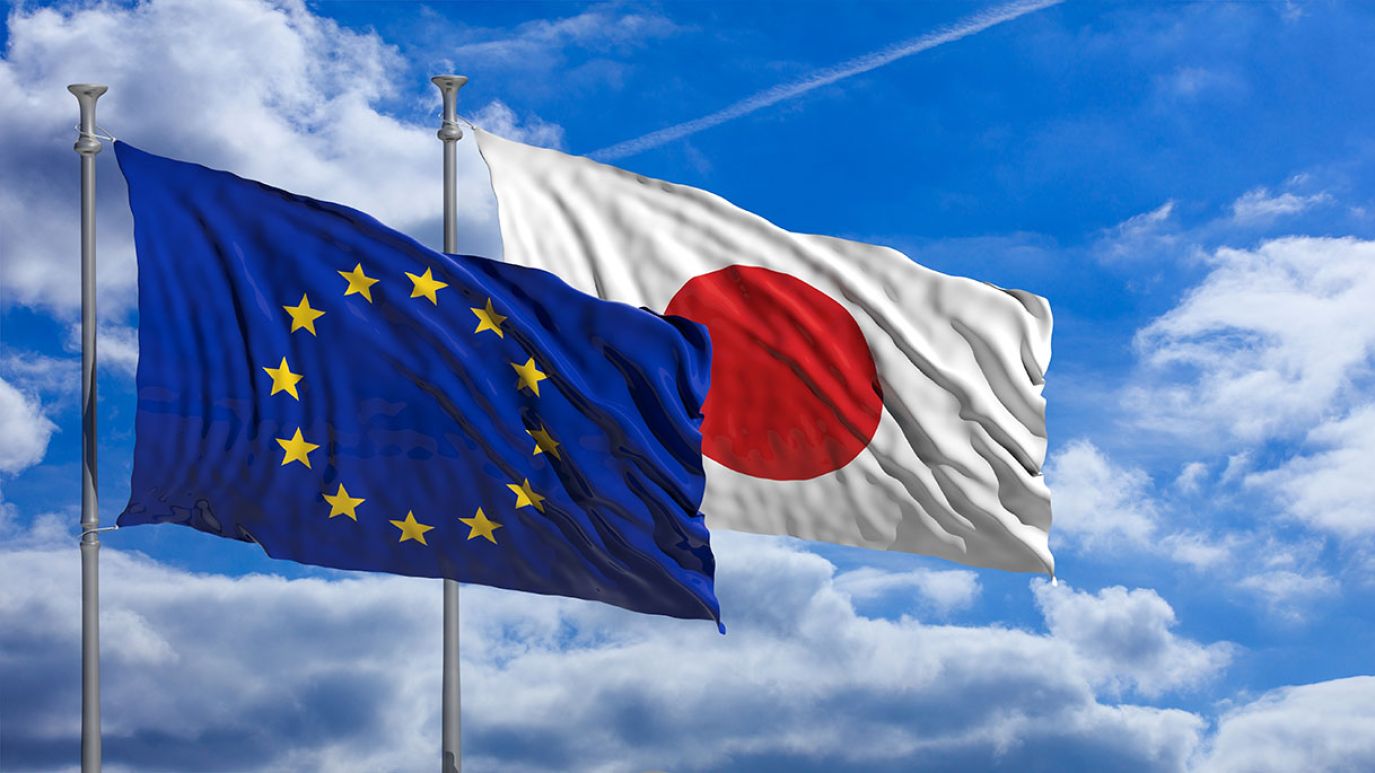Japan and the European Union agree closer cooperation to develop advanced materials as they look to de-risk from Chinese supply chains

Japan and Europe rely on Chinese advanced materials to produce semiconductors, electronics, and even renewable energy equipment. The United States is almost wholly reliant. Last year, as the dominant global supplier, China limited exports of gallium and germanium, two vital elements to produce chips. To reduce reliance on China, Japan and the European Union (EU) have announced close collaborative ties in materials science, and it may benefit the U.S. too.
On 2 April 2024, the European Union and Japan announced closer collaborative ties to develop advanced materials for applications such as semiconductors, EV batteries, and renewable energy, as well as for military, defense, and aerospace uses. It will strengthen cooperation on new and emerging technologies at the level of G7 nations.
Known as the EU-Japan Enhanced Dialogue on Advanced Materials, the agreement follows the Advanced Materials for Industrial Leadership adopted by the European Commission Communication on 27 February and enhances existing EU-Japan collaboration in R&D on material sciences.
Enhanced EU-Japan collaboration: reducing reliance on China’s rare earth materials
The Enhanced Dialogue will also provide a platform for sharing information on policy developments and pursuing collaborative research in areas of mutual interest. In 2020 alone, the EU invested €19.8 billion ($21.4 billion estimated) in its advanced materials industry, while Japan funded projects worth over €14 billion.
The EU describes advanced materials as compounds that are engineered to display superior performance or special functions. Take graphite as an example. The U.S. is nearly 100% reliant on China for graphite, which is used most notably in EV batteries, but earlier this year China placed an export ban on the material. In turn, this has prompted a significant increase in the production of synthetic graphite in the U.S. and Europe in order to move away from Chinese supply chains.
China is also the world’s largest supplier of graphene, a one-atom thick layer of carbon that has many potential applications, such as LI batteries, displays, sensors, and renewable energy, due to its flexibility and conductivity.
Advanced materials use cases: chips, renewables, EV batteries, mobile devices, military
Likewise, last year China restricted export of two essential compounds used for making semiconductors and military applications – gallium and germanium. Again, China is the dominant global supplier. The EU-Japan collaboration intends to develop replacement and innovative advanced materials so the West can significantly reduce its reliance on Chinese materials and rare earth metals, and the attendant supply chain risk.
Some touted areas of interest for collaboration include the development of sodium-ion batteries for EVs, which do not use rare earth materials from China and can be produced at lower cost than conventional batteries – currently China is ahead in this area. The EU also aims to leverage Japan's knowledge in metallic nanoparticles, which are used to improve the conversion efficiency of solar panels and to lower energy usage in smartphones and mobile devices.
Likewise, the U.S. could benefit from the innovations that come out of the EU-Japan collaboration, offering access to innovative advance materials that are not China-manufactured. For example, the U.S. sourced 74% of rare earth imports from China between 2018 and 2021 (down from 80% between 2014 and 2017, but still substantial).
But it isn’t just for chip production. Advanced materials are heavily used in military applications, for example, for producing magnets used in various defense systems – such as Tomahawk missiles, a variety of radar and missile guidance systems, and Predator unmanned aerial vehicles.
It’s why the U.S., EU, and Japan are so keen to develop domestic alternatives to rare earth materials by developing advanced materials for use in multiple, essential electronics applications, as well as materials with innovative and disruptive properties. The future of EVs is also closely linked to developing alternatives to rare earth materials.
EU-Japan collaboration will work at the G7 level: Optimism for the U.S.
The EU-Japan collaboration reflects a broader and pressing need for the West to reduce dependence on Chinese advanced materials and elements. As it aims to operate at the G7 level, the U.S. should benefit too, as it has little chance of catching China up in the rare earth materials sector. Even if resources were found, it can take up to 15 years for a mining, processing, and production plant to be fully operational, meaning that alternative advanced materials are the only viable option.
In the meantime, there will remain a complex supply chain – likely involving China for the foreseeable future – which means that Western manufacturers will need to navigate difficult waters.
Pamir has experience and expertise in performing risk assessments – throughout the supply chain, including suppliers, partners, and people – for U.S. companies operating in China or partnering with Chinese entities. If you have any concerns, or questions, about sourcing materials from China, or working with local partners, Pamir can help.
Our unique methodologies, local presence and knowledge, in-depth risk assessment, and comprehensive strategic advisory services can help you ensure compliance with domestic and Chinese regulations, while minimizing risk to your business. Contact us today, to find out more.
China’s 5G influence in developing economies
China’s Belt and Road Initiative and its digital counterpart, the Digital Silk Road, threaten to displace US telecom and tech companies in developing economies in Africa, Latin America and the Middle East. How can US operators and network providers stand up to the challenge?